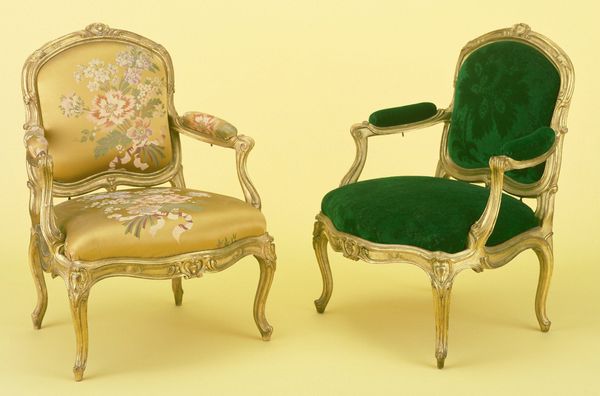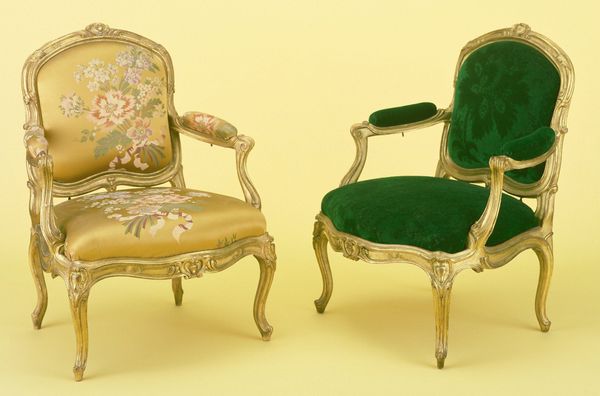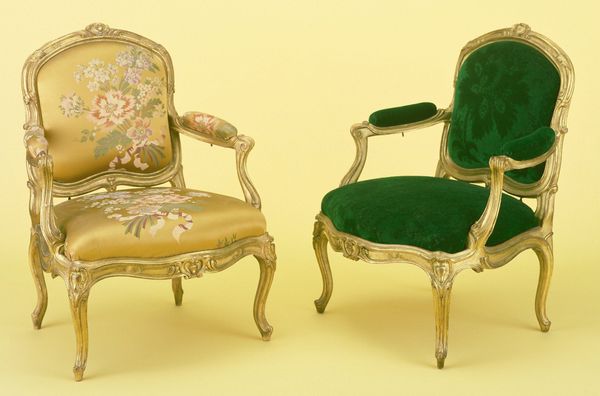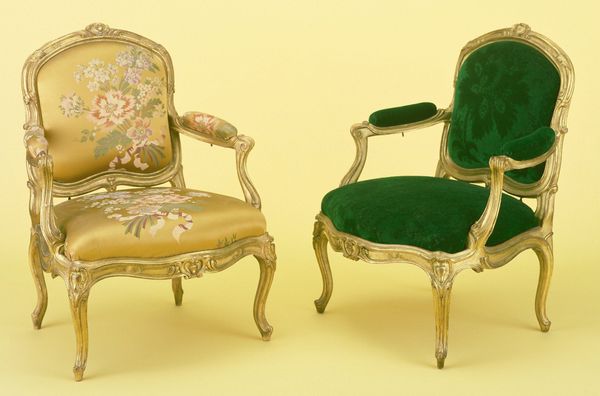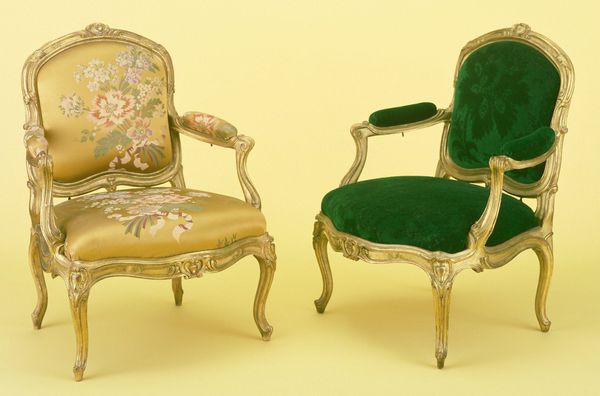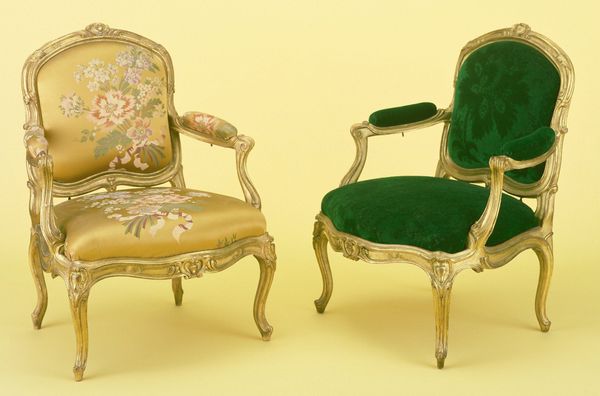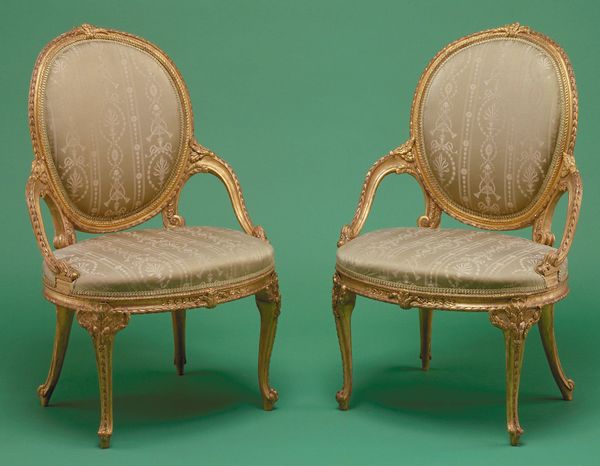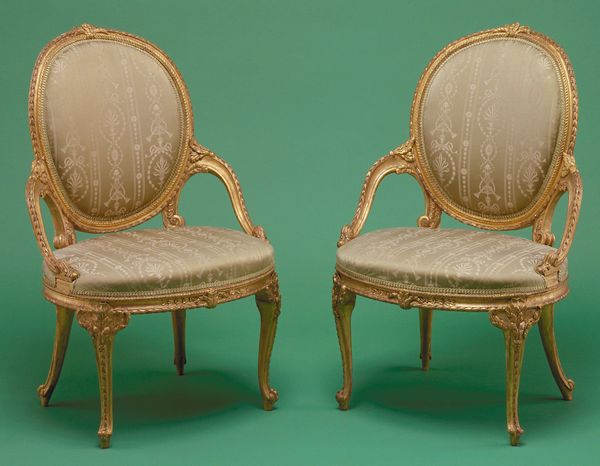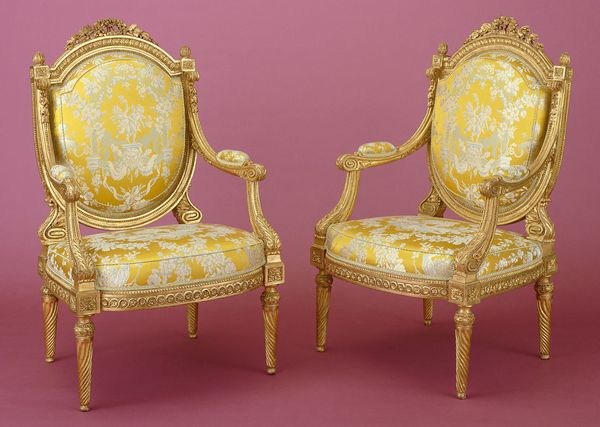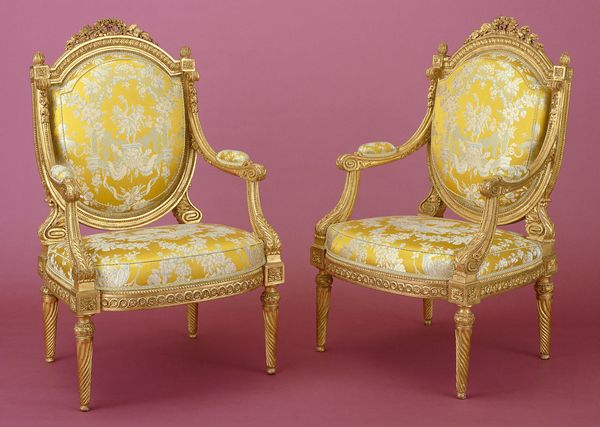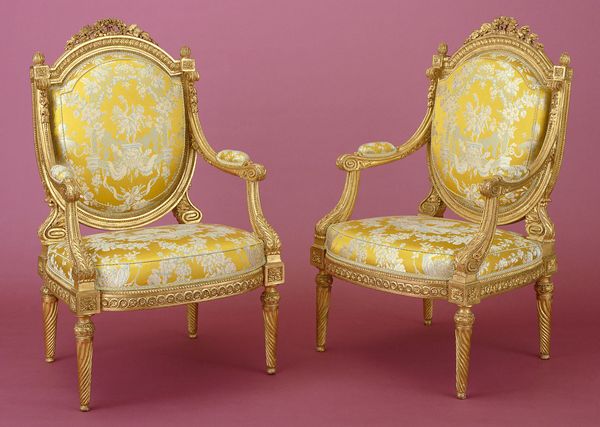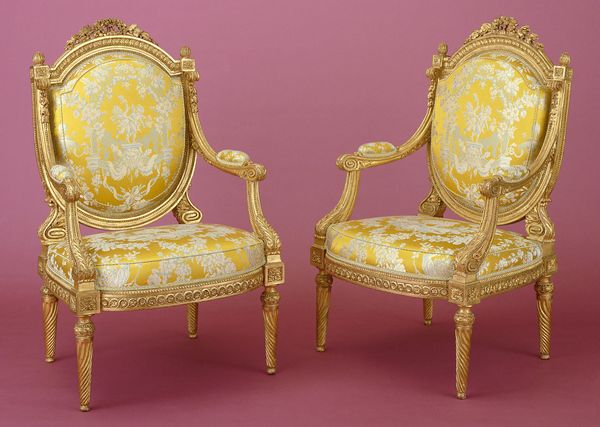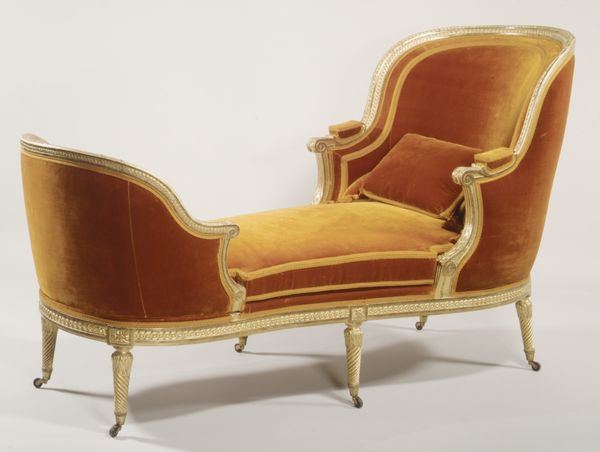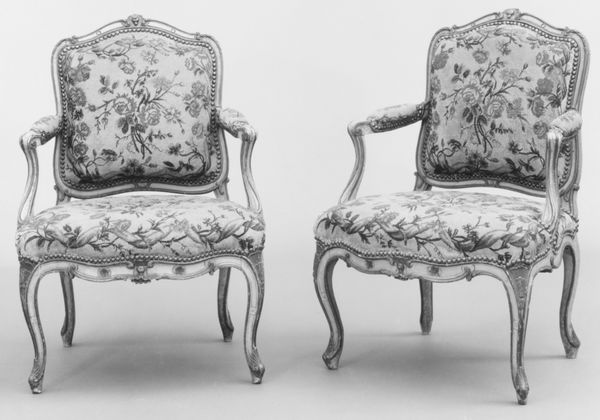
textile, wood
#
portrait
#
furniture
#
textile
#
france
#
wood
#
rococo
Dimensions: 38 1/2 x 27 x 24 in. (97.79 x 68.58 x 60.96 cm)
Copyright: Public Domain
Editor: So, here we have a pair of armchairs by Jean-Baptiste Lebas, made sometime after 1756. They're wood and textile, very ornate with gold leaf and curving lines. The floral embroidery on one is lovely, and the velvet on the other has a serious vibe. What catches your eye about them? Curator: Beyond their clear representation of Rococo style, it’s interesting to consider how these chairs functioned within the broader social landscape of 18th-century France. Think about courtly life, the salons...where might these have been placed, and what kind of conversations would have unfolded while someone sat there? Editor: I imagine someone like Marie Antoinette lounging in the floral one, maybe gossiping? Was furniture a political statement back then? Curator: Absolutely. These chairs aren’t just functional; they project wealth and power. The intricate carving, the luxurious textiles...all serve to communicate the status of the owner. Moreover, consider the patronage system – Lebas would have been crafting these for a specific, likely aristocratic, clientele. Editor: It’s funny to think about chairs being political! Curator: It prompts us to reconsider the role of decorative arts. Were they mere accessories, or active participants in the theater of power? How does the style—the embrace of ornamentation over austerity—reflect the values of the French court? Editor: I never really thought about it that way; furniture as an active participant, a storyteller. I will look at everyday objects differently from now on! Curator: Exactly! By interrogating these objects, we access a richer understanding of history, challenging us to reconsider assumptions of what constitutes historical evidence.
Comments
No comments
Be the first to comment and join the conversation on the ultimate creative platform.
